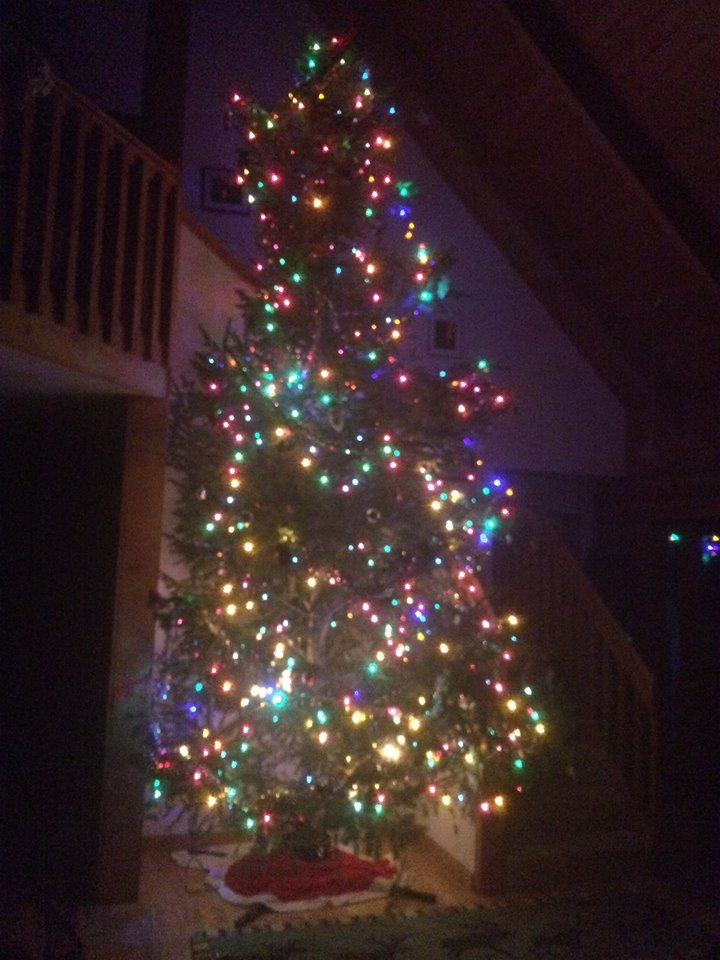 Stringing the lights together, hanging the ornaments, putting that final bow on top, and then finally plugging in the extension cord brought that magical moment — the aaahhh of the lighting of the Christmas Tree. It’s a moment that I have relived almost every year since the time I was a little girl. But the process is so completely different than what I grew up with since we bought our home in Nederland. And it speaks to what life in the mountains is all about.
Stringing the lights together, hanging the ornaments, putting that final bow on top, and then finally plugging in the extension cord brought that magical moment — the aaahhh of the lighting of the Christmas Tree. It’s a moment that I have relived almost every year since the time I was a little girl. But the process is so completely different than what I grew up with since we bought our home in Nederland. And it speaks to what life in the mountains is all about.
Christmas and the holidays is all about tradition. So much of what we do during the holidays is a comparison and a reflection on what we grew up with. And so it is with putting up a Christmas tree for that one month of the year. As a kid, my dad and I would go to some lot on a street corner, pull out a tree from the stack of trees leaning up against each other. We’d try to spread the branches to see if it looked like it had a nice shape, and eventually settle on one, tying it to the top of the car and hauling it home. All those trees we would look through were inevitably cultivated on a Christmas tree farm somewhere, with perfect spacing and little competition from any other trees — designed to produce a perfectly spire-shaped tree. Once when I was living in Oregon, I met someone whose father actually grew Christmas trees for a living and saw one. Row upon row of perfect fir trees covered several acres.
All that changed when my husband and I moved to Colorado. The first couple of years in western Colorado, we found out we could buy a permit from the local Forest Service for $5.00 to cut our own tree down on U.S. Forest Service land. The first year was rather comical as we waded in two feet of fresh snow on the Grand Mesa scouting for the ideal tree. Of course with all that snow covering the trees and the trunk, it turned into quite an escapade, and it was only after we got the tree cut down and hauled away that we realized our tree had two trunks! We ended up tying the trunks together and putting it up anyway. We got a little better at finding a tree with one trunk the following year.
But that experience brought home the adventure and fun of finding a tree in the wild, cutting it down and putting it up in our home. It’s amazing the wonderful trees that Mother Nature creates all on her own in the wilderness of the mountains, with no “farming” necessary. And the smell, oh the smell of a freshly cut tree! Every time we would walk in the door, that fresh pine or fir scent would overwhelm me.
Since moving to Nederland, we still cut down our own trees, but the cutting of the Christmas tree is easier and takes on a dual purpose. With two acres of wooded land surrounding our home, we don’t have to get a permit and drive to Forest Service land anymore. We simply scout around on our property, looking for possible trees. Cutting a tree on our property also serves to mitigate our home from wildfires as well, as we usually cut trees within our defensible space — the 100 feet diameter around our home.
Somehow, as we are looking for trees, they never seem very big outside. Once we cut them down and bring them inside, we realize that are sometimes 16, 17 or 18 feet high. Good thing we have a vaulted ceiling in our great room that is up to 25 feet high, accommodating our magnificent tree. Getting a tree in the house and putting it up is no easy feat either — french doors that we just put in this past summer help. But the first year, we found our old stand was no match for a 17 foot tree and had to make a foray to the local McGuckins hardware store in Boulder, purchasing an $80 tree stand. Finally, the stringing of the lights and hanging of the ornaments require multiple ladders, use of the stairwell and loft, as well as a special “picker” pole with a hook to place things on the upper branches.
But as we sat last night on our sofa, looking up at the twinkling lights, I realized all that work is so worth it. Our tree courtesy of Colorado soil, sun, and snow melt was a beautiful sight to behold.


So happy for you!seems you have settled in the perfect spot for you and Byron. Merry Christmas. We accept your invitation for dinner in May and look forward to it.
Jackie,
Thanks for reading, we look forward to seeing you guys again and hosting you at our mountain cabin. FYI, the last two Mays we have had snow falling 🙂